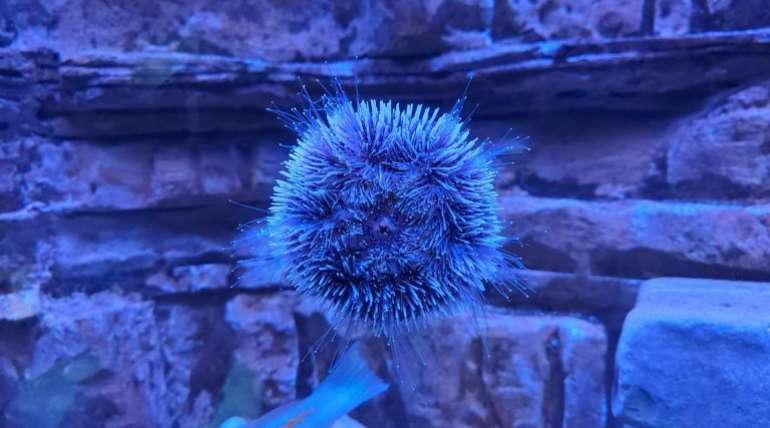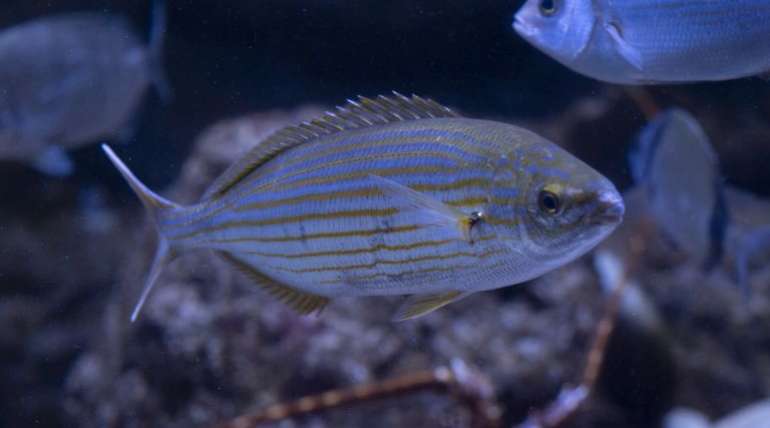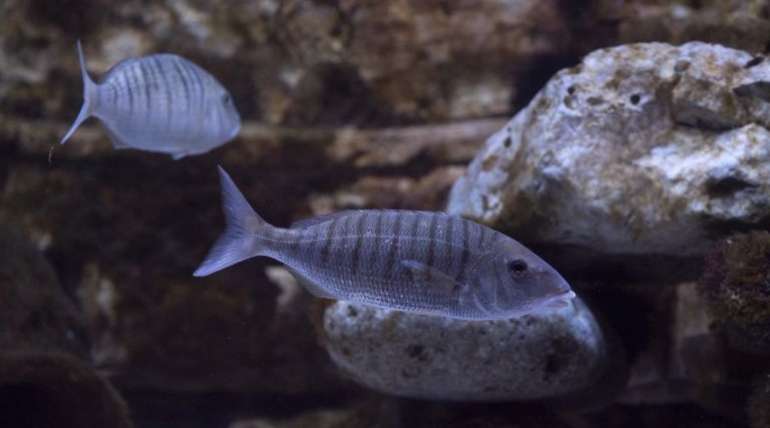Thin-lipped grey mullet (Lat. Chelon ramada). Six different species of mullet are known in the Adriatic Sea. Marine, brackish and freshwater fish that set to a depth of 10 m. It is common in ports, river areas, lagoons, estuaries.. It prefers muddy waters and muddy bottoms. It can grow up to 55 cm in length. His body is spindle-shaped, strong, slightly compressed…
Choose a language:
Common stingray (Lat. Dasyatis pastinaca). It typically inhabits sandy or muddy habitats in coastal waters shallower than 60 m (200 ft), often burying itself in sediment. It has been reported to reach a width of 1.4 m (4.6 ft) and a length of 2.5 m (8.2 ft), though a width of 45 cm (18 in) is more typical. Encountered singly or in “social” groups, the common stingray appears to segregate by sex…
Common pandora (Lat. Pagellus erythrinus). Benthic species, leaves above sandy-muddy and gravel bottom. Leaves in schools from 10-180 m depth, common 20-100 m. Pink is the dominating colour, with bluish hues, and many blue small dots, glittering in the upper part of the sides, which become brighter in the reproductive period. Grows till 60 cm (3 kg), common 10-25 cm. Feeds…
Black sea urchin (Lat. Arbacia lixula). Black sea urchin is spread throughout the Mediterranean, mostly on a stone base. It is found typically at shallow waters, at depths from 0 to 30 m, in rocky shores. It has a good resistance to hydrodynamism due to a good attachment strength to rocks. It is characterized by its deep black color and its…
Though the natural range of blue crab (Lat. Callinectes sapidus) is the western Atlantic Ocean from Nova Scotia to Argentina, it has also been successfully introduced, accidentally or deliberately, into both Asia and Europe. It is an active swimmer, with its last pair of walking legs adapted to a paddle-like shape to accommodate swimming. Blue crabs may grow to a carapace width…
Purple sea urchin (Lat. Sphaerechinus granularis). Spread on a stone bottom 1-120 m deep. It can be found between algae and seagrass and in rock crevices. The diameter of the sleeve is up to 12 cm, spines 2 cm long, purple with a white tip. It often covers itself with morsels of algae and shell fragments. It grazes on algae,…
Salema porgy (Lat. Sarpa salpa). Coastal species, lives above rocky bottom usually with vegetation and in meadows of seagrass. Leaves in schools to depth of 15 m. It is recognized at first side because it shows 10-12 conspicuous yellow longitudinal stripes. Grows till 50 cm (3 kg), common 12-30 cm. Juvenile specimen feeds with crabs. Adults feeds with algae. The flesh…
Sand steenbras (Lat. Lithognatus mormyrus). Coastal and benthopelagic species, leaves in schools above muddy and sandy bottom. Frequently species near estuaries and haunts to 50 m deep. Grows till 45 cm (2 kg), common 20-30 cm. The sparids are endowed of very robust teeth and variously specialized: in some species, the teeth are cutting and incisor-shaped, otherwise, they are similar…








